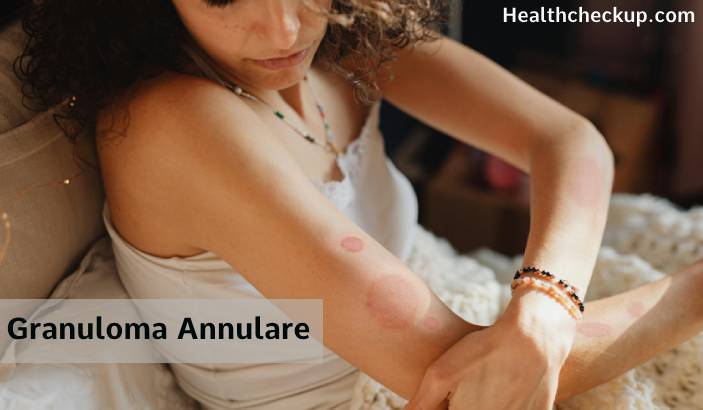Granuloma annulare (GA) is a chronic skin condition characterized by raised, red or flesh-colored bumps that form ring patterns on the skin. Though generally harmless and often asymptomatic, GA can cause cosmetic concern and discomfort for those affected. This article delves into the nature of granuloma annulare, exploring its causes, symptoms, and treatment options, while also providing insight into its diagnosis and prognosis.
What is Granuloma Annulare?
Granuloma annulare is a benign inflammatory skin disorder. The exact cause is unknown, but it is thought to be an immune-mediated condition. GA typically presents as annular (ring-shaped) patches with a slightly raised border. The central area of these patches can appear normal, depressed, or slightly hyperpigmented.
Causes of Granuloma Annulare
The precise etiology of granuloma annulare remains unclear. However, several factors are believed to contribute to its development:
- Immune System Dysfunction: Granuloma annulare is thought to involve an overactive immune response, where immune cells accumulate in the skin and form granulomas. This immune response is triggered by various factors, though it is not fully understood.
- Infections: Certain infections, both viral and bacterial, have been linked to granuloma annulare. For instance, some cases have been associated with hepatitis, HIV, and other infectious diseases.
- Genetics: There may be a genetic predisposition to developing granuloma annulare. Individuals with a family history of the condition might be more likely to develop it themselves.
- Trauma: Physical trauma or injury to the skin can sometimes precede the development of granuloma annulare at the site of the injury.
- Systemic Diseases: There is an observed association between granuloma annulare and certain systemic conditions like diabetes mellitus and thyroid disease.
Symptoms of Granuloma Annulare
The presentation of granuloma annulare can vary, but common features include:
- Lesions: The hallmark of granuloma annulare is ring-shaped lesions with a raised, bumpy border and a normal or slightly depressed center. These lesions are usually red, pink, or flesh-colored.
- Location: Lesions commonly appear on the hands, feet, elbows, and knees, but can occur anywhere on the body. Generalized granuloma annulare, a less common form, involves widespread lesions.
- Size: The size of the lesions can range from a few millimeters to several centimeters in diameter.
- Itching and Discomfort: While granuloma annulare is typically asymptomatic, some individuals experience mild itching or discomfort at the site of the lesions.
Types of Granuloma Annulare with Pictures
There are several variants of granuloma annulare, including:
Localized Granuloma Annulare: The most common form, characterized by one or a few ring-shaped lesions, typically on the hands or feet.
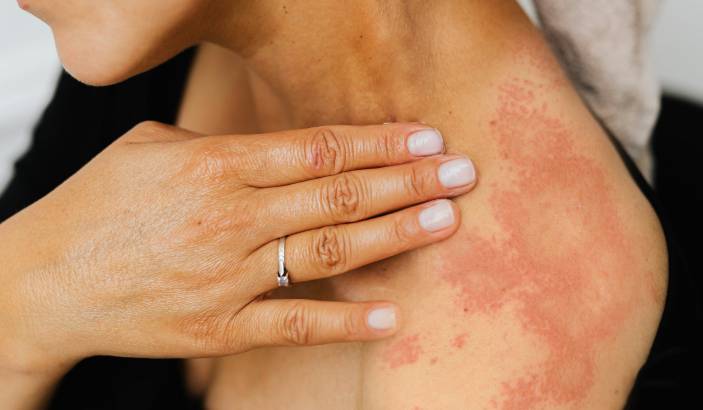
Generalized Granuloma Annulare: Involves multiple lesions spread over a larger area of the body. This form is more common in adults and can be persistent.
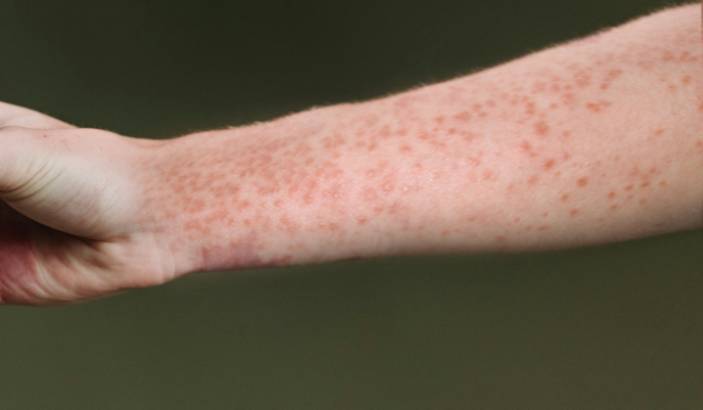
Subcutaneous Granuloma Annulare: Primarily affects children, presenting as firm, painless nodules under the skin, usually on the hands, feet, scalp, or buttocks.
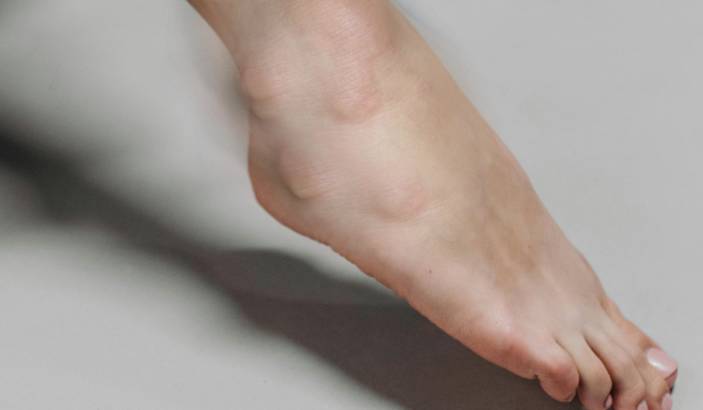
Perforating Granuloma Annulare: A rarer form where lesions ooze a substance that forms crusts and scars.
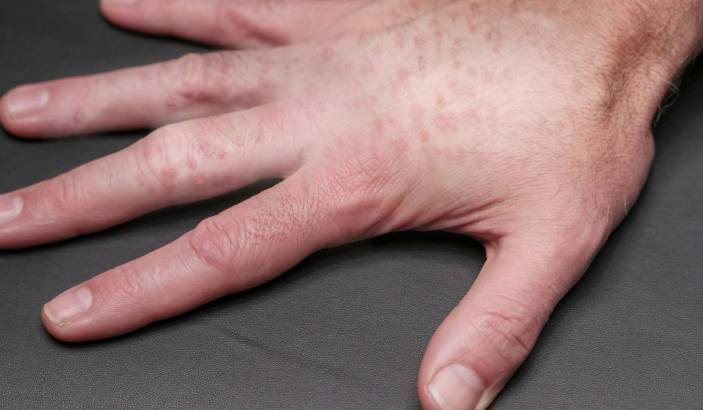
Patch-type Granuloma Annulare: Characterized by flat or slightly raised patches rather than annular rings.
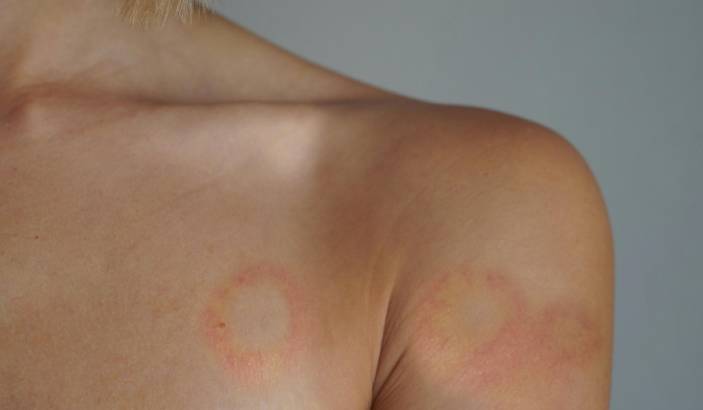
Diagnosis of Granuloma Annulare
Diagnosing granuloma annulare typically involves a clinical examination and include the following steps:
- Physical Examination: A dermatologist will examine the skin lesions and consider the patient’s medical history.
- Skin Biopsy: A small sample of the affected skin is taken and examined under a microscope to confirm the diagnosis. Histopathological examination reveals characteristic features such as necrobiotic granulomas with a palisading arrangement of histiocytes.
- Laboratory Tests: Blood tests are conducted to rule out underlying conditions associated with granuloma annulare, such as diabetes or thyroid disease.
Treatment of Granuloma Annulare
In many cases, granuloma annulare resolves on its own without treatment. However, treatment options are available for those who seek relief from symptoms or want to improve the appearance of their skin. Treatment options include:
- Topical Treatments:
- Corticosteroids: Topical corticosteroid creams or ointments can help reduce inflammation and accelerate the resolution of lesions.
- Calcineurin Inhibitors: Medications like tacrolimus and pimecrolimus can be used as alternatives to corticosteroids, particularly for sensitive areas.
- Intralesional Injections:
- Corticosteroid Injections: Injecting corticosteroids directly into the lesions can help reduce inflammation and promote healing, especially for stubborn or thick lesions.
- Systemic Treatments:
- Oral Corticosteroids: For more widespread or severe cases, oral corticosteroids are prescribed.
- Immunosuppressive Agents: Drugs such as hydroxychloroquine, methotrexate, or cyclosporine are used for persistent or generalized granuloma annulare.
- Cryotherapy: The application of extreme cold to freeze and destroy the lesions.
- Phototherapy: Ultraviolet light therapy (UVB or PUVA) can be effective for widespread lesions.
- Laser Therapy: Laser treatment can help reduce the appearance of lesions.
Prognosis and Outlook
Granuloma annulare is generally a benign condition with a good prognosis. Most cases resolve spontaneously within a few months to years, though some persist or recur. Treatment can help manage symptoms and improve the appearance of lesions but may not prevent recurrence. Regular follow-up with a dermatologist is recommended to monitor the condition and adjust treatment as needed.
Granuloma annulare is a relatively common skin condition that can affect individuals of all ages. While its exact cause remains unknown, it is associated with various factors, including immune response, infections, and systemic diseases. Diagnosis is typically based on clinical examination and is confirmed with a skin biopsy. Although granuloma annulare often resolves on its own, several treatment options are available to manage symptoms and improve the appearance of the skin.
I specialize in writing about health, medical conditions, and healthcare, drawing extensively from scientific research. Over the course of my career, I have published widely on topics related to health, medicine, and education. My work has appeared in leading blogs and editorial columns.


